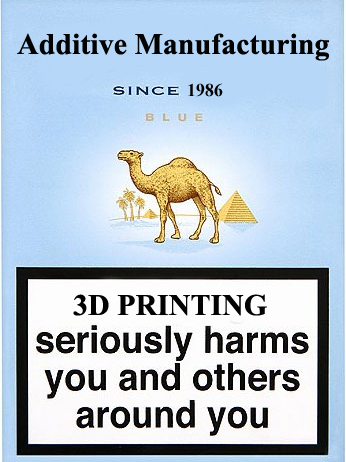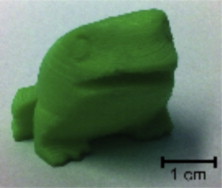Illinois Institute of Technology Releases Study on Health Risks of Additive Manufacturing

Running a 3D printing indoors could pose a threat to your health.
Latest News
July 25, 2013
Our society has placed warning labels everywhere. You’ll find a label on lawn mowers cautioning users not to put their feet into the blades. McDonald’s warns the unwary that their morning cup of coffee is hot, and, of course, cigarettes feature a variety of warnings to notify smokers that cigarettes are bad for their health. Many such warnings seem kind of silly, and exist mainly as protection against lawsuits.
Additive manufacturing systems may be the next product to end up with a warning label. According to a study produced by the Illinois Institute of Technology, running a 3D printer that uses plastic as its material may be as dangerous to your health as smoking cigarettes.

“Because most of these devices are currently sold as standalone devices without any exhaust ventilation or filtration accessories, results herein suggest caution should be used when operating in inadequately ventilated or unfiltered indoor environments. Additionally, these results suggest that more controlled experiments should be conducted to more fundamentally evaluate particle emissions from a wider arrange of desktop 3D printers.”
The culprit here is the ultrafine particle (UFP) emissions produced by a 3D printer when it builds an object from plastic. According to the study, the printers release approximately 20 billion particles/minute while building with PLA at low temperatures and upwards of 200 billion/minute when working at higher temperatures and with other materials. By way of comparison, this presents the same sort of health risk as smoking indoors, or working with a gas stove in an enclosed area.
Most people will hardly be surprised that standing around sniffing melting plastic is bad for your health. The same precautions that allow you to use any potentially toxic product at home can reduce the risks when using a 3D printer. Make sure you work in a well-ventilated area, and procure and use safety equipment. It’s also worth noting that most industrial AM systems already come with safeguards.
Will this study have an impact on home 3D printer sales? If it does, I wouldn’t expect much of a drop. It isn’t really all that difficult to work around the potential hazards. I fully expect the industry, or some enterprising inventor, to rise to this new challenge and design filters to reduce UFP emissions. In the meantime, make sure you open a window.
Lacking any kind of 3D printer safety video, below you’ll find an interesting look at AM from CNN.
Source: Atmospheric Environment
Subscribe to our FREE magazine, FREE email newsletters or both!
Latest News
About the Author
John NewmanJohn Newman is a Digital Engineering contributor who focuses on 3D printing. Contact him via [email protected] and read his posts on Rapid Ready Technology.
Follow DE





